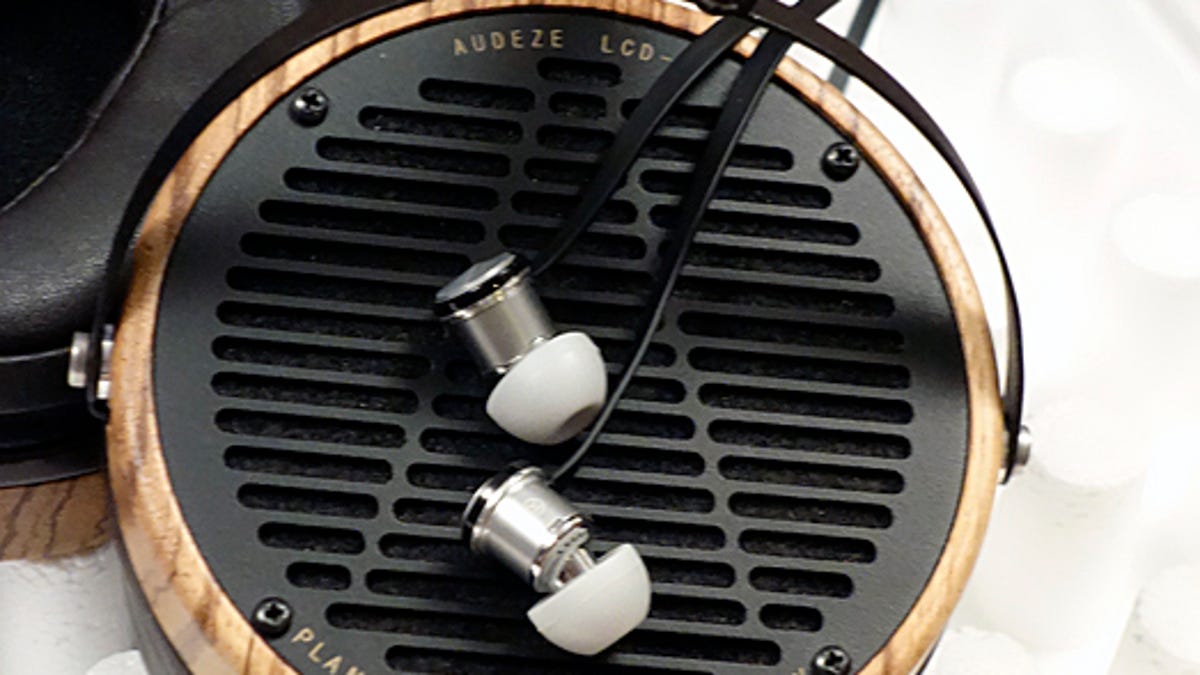'Inside' vs. 'outside' headphones: What's the difference?
It's not just size; some headphones are better suited to on-the-go use, and others are mostly stay-at-home types.

The Velodyne vPulse is one of the best pair of $99 headphones I've ever listened to on the NYC subway, but it's not one I use at home or in any quiet space. Why's that?
The vPulse's overly generous bass turns me off at home, but it sounds perfectly balanced on trains, buses, cars, or planes. What those modes of transportation all have in common is lots of low-frequency rumble, and the vPulse's pumped up bass masks some of that noise. Headphones with more accurate bass response sound fine at home, but woefully bass shy on the go.
Worse yet, the very low frequency rumble on trains, buses, and so on can't be nullified by noise-canceling or noise-isolating headphones because those noises are felt through your entire body, not just heard through your ears. Bassy headphones may not be the perfect solution to the problem, but they can be surprisingly effective.
I suppose it's safe to assume most people spend the bulk of their listening time in noisy environments, and that probably explains why most headphones have too much bass. Then again, too much bass is usually the preferred option for most buyers for every occasion.
The indoor vs. outdoor headphones breakdown isn't just a matter of size, but sure, big headphones are inherently less portable than on-ear or in-ear models. Large, over-the-ear, hinged headphones, or ones that fold flat, can cross over and work perfectly well as portable "cans," but they're still way bigger than in-ear headphones. I think the top full-size models sound better than the best custom, molded-to-the-ear models, so I rarely listen to in-ears at home.
My Audeze, Abyss, Sennheiser, and Beyerdynamicheadphones are mainstays at home, but they don't cut it outside the home or studio for a number of reasons. First, they don't block environmental noise, and they're too big and fairly delicate. Then there's the problem with power -- those headphones were designed for use at home or in studios, where amplifier power isn't an issue, and small, battery-powered devices aren't up to the job.
Outside, I use custom-molded-to-my-ears JH Audio and Ultimate Ears in-ear models, because they block environmental noise better than universal-fit in-ears and earbuds, and they both have extraordinary resolution and clarity. They sound great with portable devices, and even better teamed up with portable digital converters and headphone amps. As great as they are, they're nowhere as enjoyable as my best full-size headphones I listen to at home. They're different tools for different jobs.
The Bose QuietComfortnoise-canceling on-ears are the best noise-cancelers I've heard, but they're far from great sounding headphones. The PSB M4U 2 is almost as good a noise husher, but it sounds better than the Bose. So sure, if you do the bulk of your listening in very noisy places, an NC headphone might be a good idea, but if you also spend a lot of time in quieter settings, a noise-isolating headphone will, dollar for dollar, sound better. NC headphones always rely on electronics to banish noise, but the electronics invariably degrade sound quality; noise-isolating headphones don't have electronics, and don't use batteries to power them. Most in-ear (not ear bud), full-size closed-back headphones isolate the wearer from external noise to some degree. Not as well as NC headphones, but they sound better than the NC headphones. If you mostly listen in quiet settings, a noise-canceling headphone is a waste of money; better sound is available for less.
If you can afford more than one headphone, the best solution is to buy a good noise-canceling or noise-isolating headphone, and a dedicated set of full-size, stay-at-home headphones.

